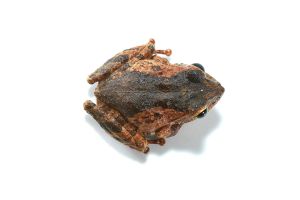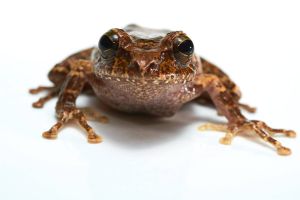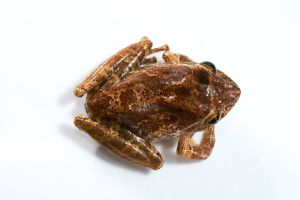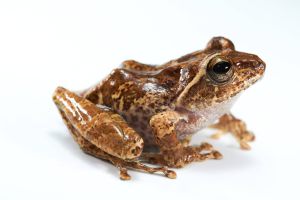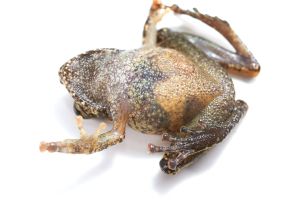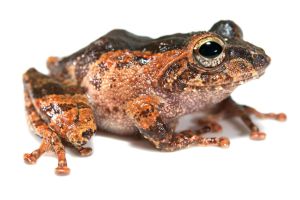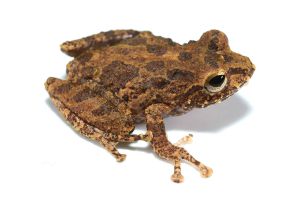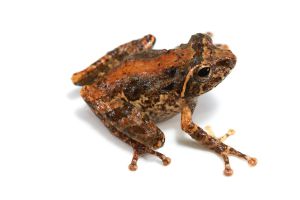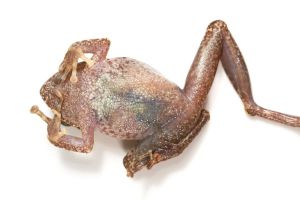
Frogs of Borneo

Frogs of Borneo

Frogs of Borneo

Frogs of Borneo

Frogs of Borneo

Frogs of Borneo

Frogs of Borneo

Frogs of Borneo

Frogs of Borneo

Frogs of Borneo

Frogs of Borneo
Bornean Families
Philautus:
kakipanjang
Long-legged Bush Frog
The type locality lies below the summit of Gunung Serapi (01°35.261’ N, 110°11.578’ E) in Kubah National Park, Sarawak, Malaysia, at 780 m a.s.l. The species has also been confirmed from neighboring mountains—such as Gunung Gading and Gunung Pueh—of similar elevation in western Sarawak and Kalimantan. The full extent of its natural distribution, however, remains unclear due to the scarcity of confirmed records.
This is a moderately large Philautus. Males reach about 24 mm in snout–vent length, while the size of females has not yet been documented. The species name refers to its relatively long hindlimbs: when adpressed forward along the body, the tibiotarsal joint extends beyond the tip of the snout. The snout is acuminate in dorsal view and slightly projecting, with a small bump in lateral view. The canthus rostralis is distinct and gently curved. Finger and toe tips bear expanded adhesive discs, and moderate webbing is present between the toes. The pupil is elliptical and horizontal.
Skin texture is notably variable: relatively smooth individuals may occur in the same population as specimens with more granular skin and distinct tubercles. Tubercles are usually present above the eyes and sometimes on the shoulders. A straight supratympanic fold runs from the eye to the arm and is occasionally accentuated by coloration. The tympanum is indistinct, being covered by skin. Underside is pebbled.
Coloration is generally within the brown range. The dorsum is light to medium brown with chocolate-brown markings. As in many other Philautus, coloration is variable, as illustrated by our image series. At night, the darker markings tend to lighten, giving the frog a less contrasting appearance. The limbs bear dark crossbars. There are several facial markings from the eye to the nose and the upper lip. The original description characterizes the iris as golden, but our photographic material suggests a slightly more silvery sheen in the lower iris, with a narrow brown horizontal bar at pupil level. Throat, chest and belly are stippled and partially translucent.
Calling males are typically found perched on vegetation up to 3 m above the ground. The species appears to occur above 750 m a.s.l., in and above the transition zone from lowland dipterocarp forest to lower montane forest.
Version tracking
-
20.10.2025
updated
